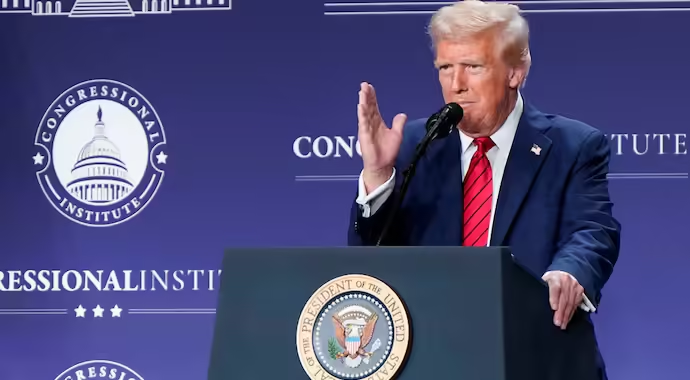In a move that could reshape global trade, President Donald Trump’s newly imposed tariffs—touted as “reciprocal” by the White House—are now being criticized for being anything but. Economic observers argue that these levies are not genuinely tied to the duties other countries place on U.S. exports. Instead, they appear to be calculated based on the U.S. trade deficit with each country, adjusted according to the size of bilateral trade.
This approach, unprecedented in trade policy, defies both economic rationale and moral justification, according to experts. It seems to reflect Trump’s skewed understanding of international trade, one that could ultimately hurt U.S. consumers, businesses, and allies.
A Misguided Attempt to Balance Trade?
Trump’s core objective appears to be eliminating the U.S. trade deficit. However, doing so by zeroing out individual trade imbalances with each country is widely seen as inefficient and misguided. Economists warn that this formula is likely to inflict the greatest pain on American buyers, particularly by penalizing countries that have successfully aligned their production to meet U.S. consumer needs.
Countries like Bangladesh, which have built efficient export industries around American demand—especially in sectors like garments—are now facing the steepest tariffs. Bangladesh, despite its efforts to improve labor conditions and efficiency in textile production, is being hit with a 37% tariff. In contrast, India, whose garment industry is seen as less efficient and more fragmented, faces only a 26% tariff.
Rewarding Inefficiency
This discrepancy means that Indian textile producers—who were previously unable to compete with Bangladeshi firms—may now have a pricing advantage due to the lower tariffs. Industry insiders say that just a few percentage points in margin can sway massive contracts in this sector, and the 11-point gap created by the tariff policy could completely shift sourcing decisions. Ironically, this could boost India’s exports without any actual improvement in efficiency or output quality.
However, even with these changes, American manufacturers remain uncompetitive. The cost of producing garments in the U.S. still far exceeds that of both Bangladesh and India. For example, the cost of a shirt made in the U.S. can be two to three times higher than one produced in Bangladesh.
Strategic Confusion and Policy Uncertainty
Critics argue that a flat, across-the-board tariff might have been more coherent if the goal was to encourage U.S.-based manufacturing. A uniform 20% duty, for instance, would give American investors a clear benchmark: lower your production costs to within 20% of top exporters like Bangladesh, and you might gain a foothold in the market.
Instead, Trump’s country-by-country tariff structure adds complexity and unpredictability. American companies no longer have a clear cost target to beat. They now must speculate on how much it would cost if production shifted from Bangladesh to India, Vietnam, or Colombia—each affected differently by the tariffs.
This unpredictability has serious implications for investment. Without stable targets, firms may delay or cancel plans to manufacture in the U.S., further undermining Trump’s aim to revive domestic production.
Consumers Face Higher Costs and Lower Quality
The broader consequence for American consumers is clear: higher prices for lower-quality goods. The proportional tariffs will likely push U.S. retailers to source products from less efficient but lower-tariff countries. Shoppers could soon see more garments from India or Colombia, which are costlier and potentially of lower quality than those from Bangladesh or Vietnam.
Worse still, this pricing instability isn’t a one-off shock. The system virtually ensures long-term uncertainty, contributing to ongoing inflation rather than a short-lived price bump.
By abandoning decades of established trade practices and economic insight, Trump’s tariff regime is rewriting the rules of global commerce—but not necessarily to America’s advantage. The policy seems poised to undercut precisely the voters it was intended to protect, with rising prices, unpredictable markets, and no clear path to revitalizing U.S. industry.
Rather than creating jobs or restoring American manufacturing, experts warn the tariffs could trap consumers and businesses in a cycle of uncertainty, inefficiency, and inflation.







